A few weeks ago the #Kenya365 final instameet happened, we had finished the full year of Kenyan instagramming and it was a chance to get everyone together. Mutua Matheka suggested we go to the Kenya Railways Museum, a place I hadn’t been since I was in school. I took my daughters with me, and we had a great time exploring the old trains and marveling at the engineering feats required to create what they did over 100 years ago.
As I was getting ready for my talk at PopTech I started thinking about how those engineers of yesteryear connected the world. Since man had first tamed the horse, we had never moved as quickly or as consistently as when the railroad was created. It was a true changing of the world.
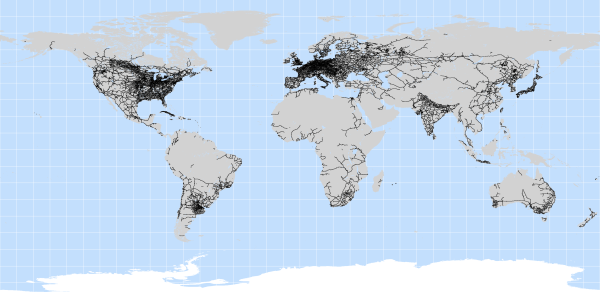
A map of global railway lines
There were many incredible obstacles for the pioneering engineers of that time to overcome.
Kenya’s railway museum reminds of us this rich history of overcoming obstacles with the story of Lt. Col. John Henry Patterson who at the ripe age of 31 was commissioned by the British East Africa Company to help extend the East Africa Railway (EAR) through the Tsavo region on the way from Mombasa to Uganda. It was at the Tsavo river that the unfolding of the great “Man Eaters of Tsavo” lion story unfolds, where two extremely large male lions stopped the railroad’s progress for the better part of a year. Official railway records state 28 died, though 140+ is a more accurate number as it constitutes the non-railway employees taken as well. No matter what the thousands of Indians and African workers did, they couldn’t stop the lions from jumping the thorn bushes, entering tents and braving the fires. Too many nights friends and co-workers were dragged screaming and eaten within hearing distance. It was enough that the workers started to flee in their hundreds.
Now for Col. Patterson, being a stalwart Man of Empire, this was a true crisis. His arrival had coincided with the attacks, so he was to blame by many. He was being disgraced and by any means necessary, he had to get the job done. Fortunately he had served a number of years in India and was an accomplished tiger hunter. 9 months later, Patterson bags both lions in the span of three weeks, changing his story from one of scapegoat and failure to one of a hero. Of course the book he wrote about it didn’t hurt his reputation either – and many of us know this story from the 1996 movie where Val Kilmer plays Col. Patterson in “The Ghost and the Darkness”.
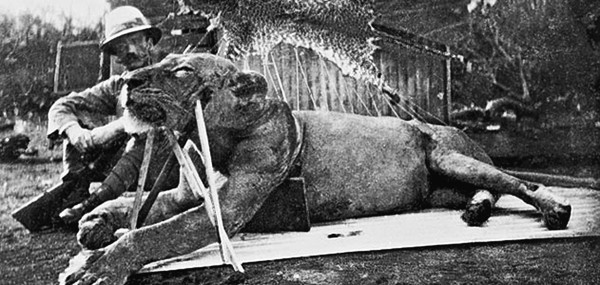
Col. Patterson and one of the man eaters of Tsavo lions
If these pioneers were alive today, what would be their frontier?
Physically connecting people and things was the great challenge of their time. Digitally connecting people and information is the great challenge of ours.
They drove this iron backbone into every continent. It is no coincidence that our new backbones run alongside these same rails and roads. The world over, the engineers of our day are building this internet connectivity through fiberoptic cable into every continent, and Africa is no different.
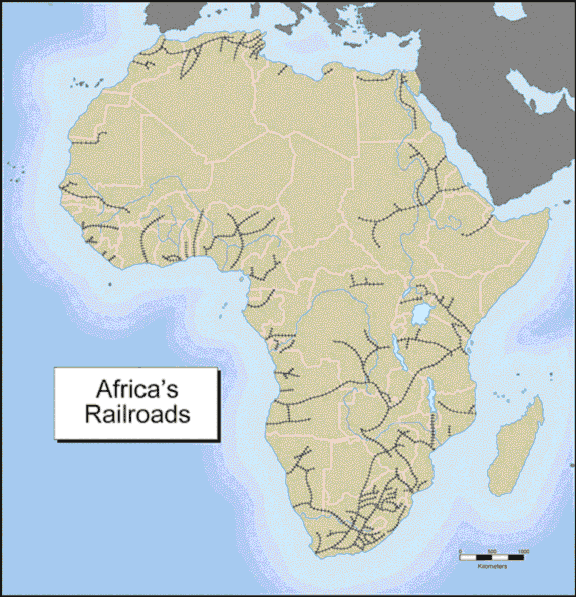
A map of the railway lines in Africa
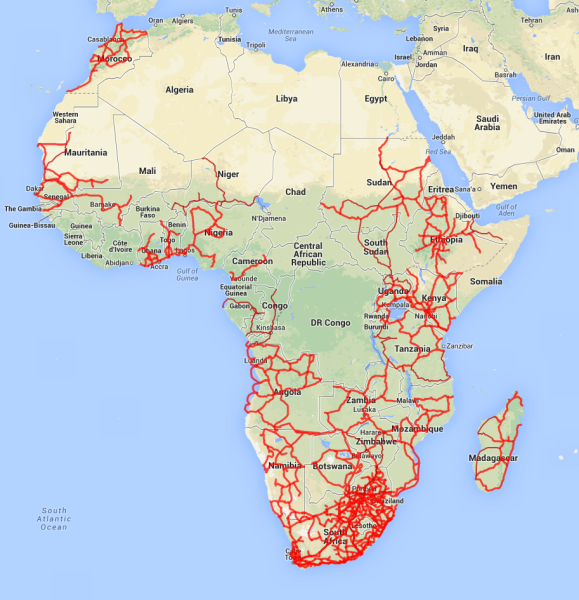
A map of the internet terrestrial fiber optic cables in Africa
(Once again, we all owe a debt to Steve Song for his maps of Internet in Africa, with this terrestrial cable map. A more detailed PDF.)
Terrestrial Internet Backbones and the Obstacles of Today
We have our own obstacles today. For, though we build the internet backbone into Africa, what happens when the rail ends? We have a problem where the infrastructure doesn’t match the connectivity equipment; meaning burnt out servers and routers due to power surges and brown-outs. This caused us to ask, “why are we using the routers and modems designed for London and New York when we live in Nairobi and New Delhi?”
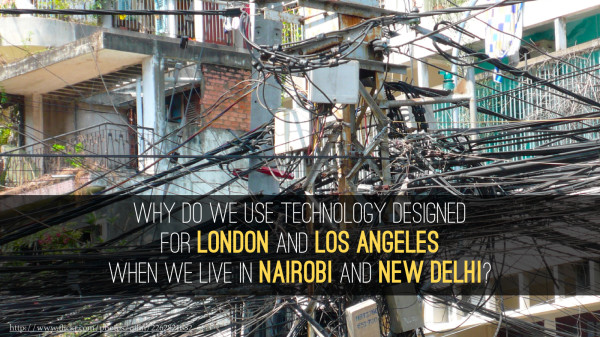
With the BRCK, we’re extending the rail lines of connectivity to the edges of the network.
BRCK provides true last mile connection for Africa and other emerging markets. We designed it for our own needs, in Nairobi. It’s a rugged and simple WiFi device, made for our challenging environment where all of the redundancies of the device for both power and internet connectivity equate to productivity. It connects both people and sensors.
We envision it being used him homes and offices around the continent, by travelers, workers and community health workers in rural areas and by organizations managing everything from water flow sensor to remote power station management on the edges of the grid.
While all of the big technology companies go after “the next big thing”, where they endeavor to stretch the edges of what’s possible with technology, most of the world sits unable to take advantage of the older technology. High-end and brilliant technology is being transplanted from the US and EU to Africa – it is the best technology in the world, it just doesn’t work were we live.
It has become clear that no one else is taking this problem seriously. It’s time for us, as African technologists, to stand up and solve our own problems. To grasp the opportunities. We might even find that the addressable market is much larger and lucrative than our Western counterparts are aware of.
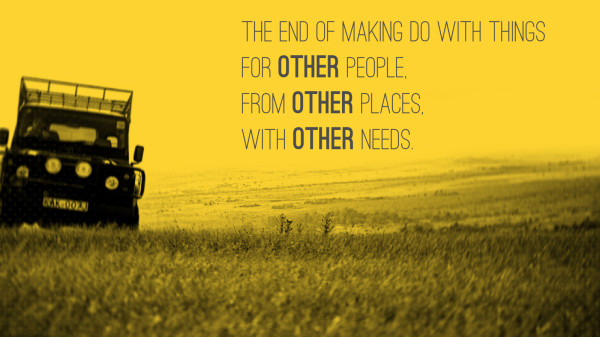
It’s the end of making do with things designed for other people, from other places with other needs. We’re entering a time where good enough is no longer good enough. The BRCK is just one of many new products that are designed for us, by us and meets our needs.
What’s next for BRCK?
We’re raising a round of investment now for BRCK, you can find out more on Angel List at Angel.co/BRCK. The IP is held by Ushahidi, and the BRCK has spun out as an independent commercial entity in a way that if it does well, so does Ushahidi. We have a strong business strategy, and a fantastic team with which to execute it.
This coming week we are traveling to the far edges of the network as we chase the November 3rd solar eclipse. The BRCK will be stress tested to it’s very limit, for ruggedness, connectivity and reach. If we get the VSat (BGan) connection we’re looking for, then we might be able to live stream the solar eclipse on Nov 3rd at 2:15pm from the edges of Lake Turkana to the rest of the world. Follow the BRCK Blog, and my own here, for updates as we go.
October 29, 2013 at 2:40 am
the ‘man eaters of tsavo’ give a whole new meaning to the term ‘indian takeaway’ (Bill Bryson)
October 29, 2013 at 12:14 pm
Erik, I’ve been following the news on BRCK for some time. I’m hopeful it will serve many Bible translation teams well. What you wrote here is particularly moving. Well done.
-Johanna
Research & Digital Content Specialist
The Seed Company
November 1, 2013 at 5:47 am
Thanks for this great story Eric. I have been researching this parallel between rolling out railway communications and internet communications in Africa. One point in addition to the ones you make: the railways connected SOME parts of Africa but not all (as your map shows). In fact – when you write of connecting people and things – it might be right to say that largely the railway network connect the things of Africa (largely those dug up from the ground) to the people (markets) of Europe. And a century later, the railway map has not been extended and in some places it has contracted. I am concerned that today our Internet infrastructure may stall at the same point. I look forward to the growth of your BRCK initiative and also to more initiatives that will tackle extending the backbone infrastructure to meet the challenge of digitally connecting PEOPLE.